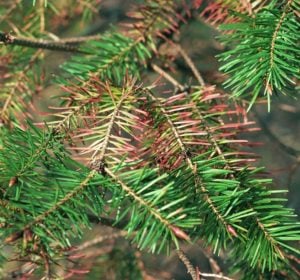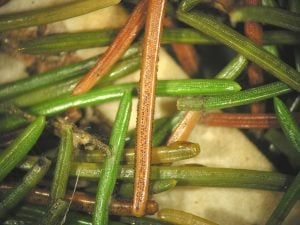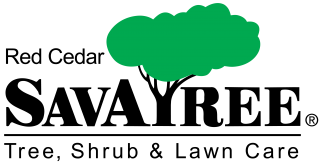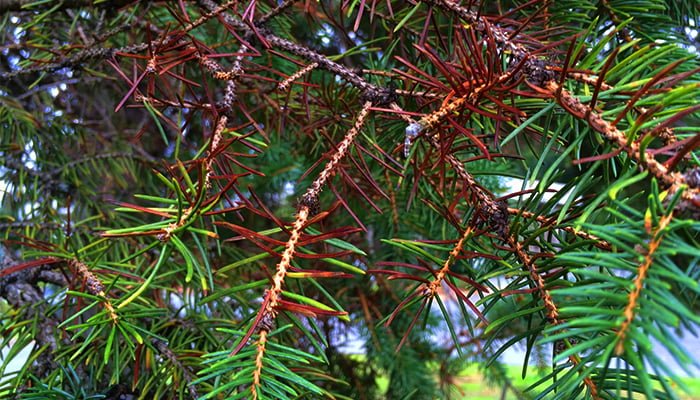Are the needles on your blue spruce tree turning brown or yellow? Specifically, do you see healthy needles on the tips of their branches with no needles, or dead looking needles as you head inward towards the trunk? If this is what you’re seeing, your blue spruce tree is likely suffering from needle cast disease. Once these needles turn brown, yellow, or red, they will likely begin to shed. Many homeowners that are experiencing needle cast will often describe their blue spruce as looking burned.
What is needle cast disease?
 Needle cast gets its name from how the disease “casts off” older needles and keeps the younger needles. There are over 40 different kinds of needle cast diseases in North America, but the two most popular kinds that infect spruce trees are Rhizosphaera and Stigmina. Luckily, these two forms of the disease are treatable.
Needle cast gets its name from how the disease “casts off” older needles and keeps the younger needles. There are over 40 different kinds of needle cast diseases in North America, but the two most popular kinds that infect spruce trees are Rhizosphaera and Stigmina. Luckily, these two forms of the disease are treatable.
What causes the disease?
Spruces are particularly susceptible to needle cast disease. Prolonged periods of moisture from rain aid in the growth of the fungus that leads to needle cast. Since the disease and fungus thrives in humid and wet areas, it is more common in north and east parts of the state.
What should I look for?

As mentioned above, the fungus has a distinctive appearance. Your branches will have green and healthy needles at the tips of the branches, and brown/yellow/red dying needles towards the interior of the branch. Typically, the damages will begin at the bottom of the tree and head upwards. When your professional Arborist looks at the needles during diagnosis, they will use tools and methods that allow them to see if there are rows of black dots in the needles, which are the fruiting bodies of the fungus. These spots are often hard to see or identify with an untrained eye. If these fungus dots are found, and/or the pattern of dying needles is identified, it is likely you will be given the diagnosis of needle cast disease.
Treatment:
Call your professional Arborist! By using a proper fungicide product and method of application, we can help prevent new growth from becoming infected, and help control spreading. Timely application is extremely important in preventing new growth. Spraying too early, or too late can result in missing the proper stages when a tree can be protected from infection. The size of the tree will play a large role in determining proper treatment and equipment needed. Proper diagnosis is the first step in proper treatment.
Tree replacement or removal:
While needle cast is generally treatable, and the spreading of the disease is avoidable, in some instances, homeowners may prefer to have the infected tree removed. If you are in fact removing your infected spruce, you may want to consider planting a tree in its place that is less susceptible/prone to disease.
Whether you are choosing to treat your infected blue spruce tree, or you have decided to remove and replace it, the proper care plan is crucial. Caring for a young tree properly from day one is important in avoiding and preventing disease and dying. Properly treating a diseased tree is key in avoiding the spread of the disease from tree to tree, as well as avoiding additional infected growth spots within the tree itself.
If you suspect that your blue spruce tree is suffering from needle cast disease, or you have noticed a decline in its needles, it is extremely important to call a professional to first properly diagnose the issue. There are other fungal infections that require different treatment that may display similar symptoms to Rhizosphaera. Improper diagnosis leads to improper treatment. Contact Red Cedar today for your free consultation, and let us inspect your declining conifer to formulate a proper diagnosis and management/treatment plan.


